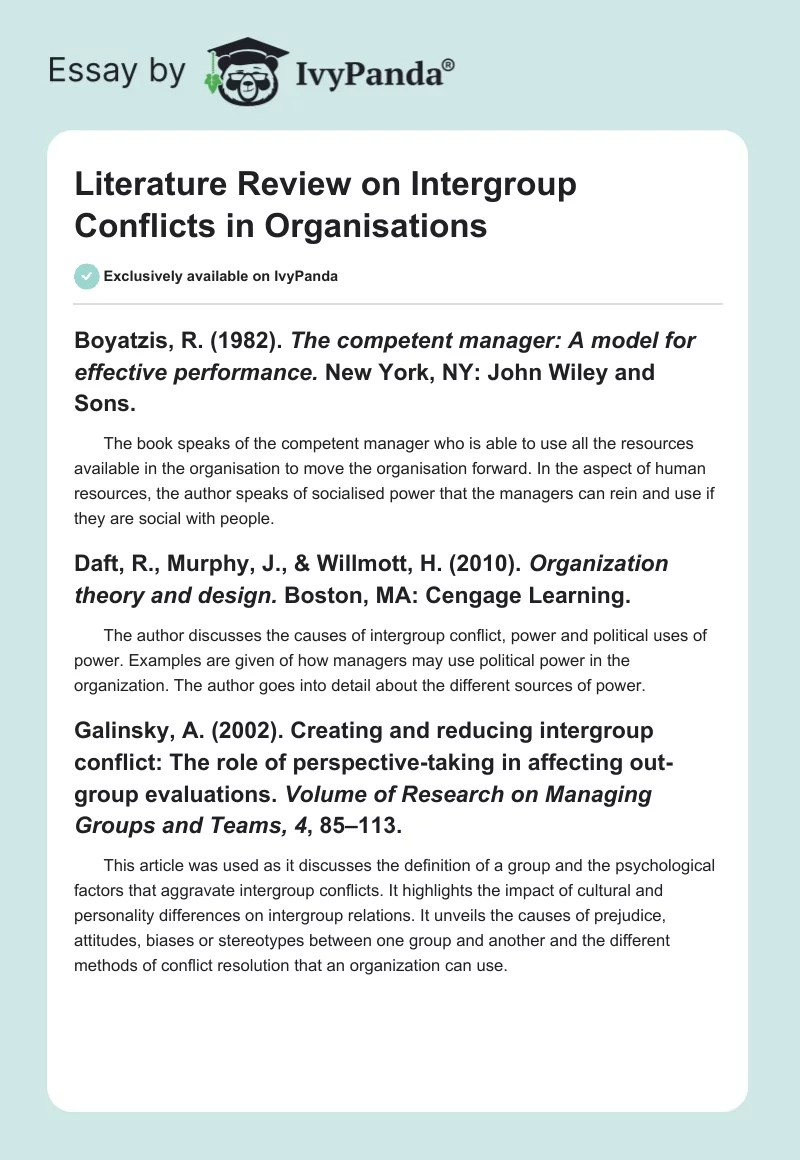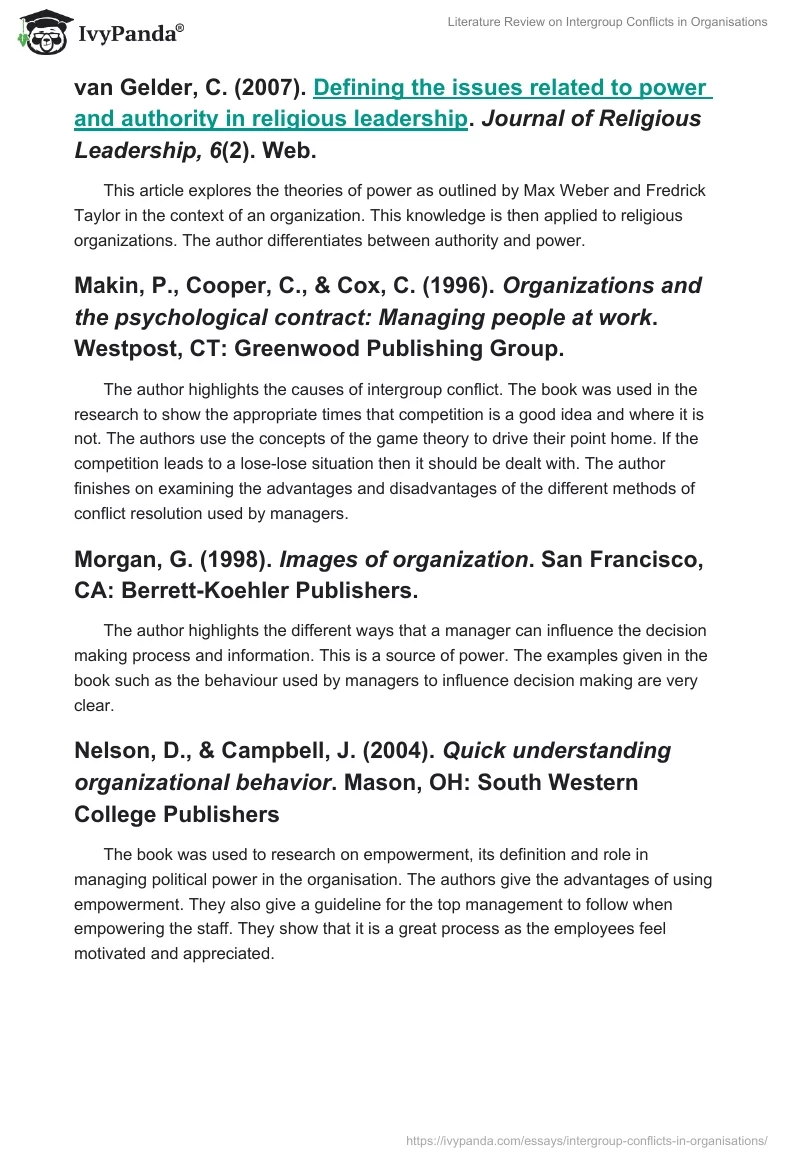Boyatzis, R. (1982). The competent manager: A model for effective performance. New York, NY: John Wiley and Sons.
The book speaks of the competent manager who is able to use all the resources available in the organisation to move the organisation forward. In the aspect of human resources, the author speaks of socialised power that the managers can rein and use if they are social with people.
Daft, R., Murphy, J., & Willmott, H. (2010). Organization theory and design. Boston, MA: Cengage Learning.
The author discusses the causes of intergroup conflict, power and political uses of power. Examples are given of how managers may use political power in the organization. The author goes into detail about the different sources of power.
Galinsky, A. (2002). Creating and reducing intergroup conflict: The role of perspective-taking in affecting out-group evaluations. Volume of Research on Managing Groups and Teams, 4, 85–113.
This article was used as it discusses the definition of a group and the psychological factors that aggravate intergroup conflicts. It highlights the impact of cultural and personality differences on intergroup relations. It unveils the causes of prejudice, attitudes, biases or stereotypes between one group and another and the different methods of conflict resolution that an organization can use.
van Gelder, C. (2007). Defining the issues related to power and authority in religious leadership. Journal of Religious Leadership, 6(2). Web.
This article explores the theories of power as outlined by Max Weber and Fredrick Taylor in the context of an organization. This knowledge is then applied to religious organizations. The author differentiates between authority and power.
Makin, P., Cooper, C., & Cox, C. (1996). Organizations and the psychological contract: Managing people at work. Westpost, CT: Greenwood Publishing Group.
The author highlights the causes of intergroup conflict. The book was used in the research to show the appropriate times that competition is a good idea and where it is not. The authors use the concepts of the game theory to drive their point home. If the competition leads to a lose-lose situation then it should be dealt with. The author finishes on examining the advantages and disadvantages of the different methods of conflict resolution used by managers.
Morgan, G. (1998). Images of organization. San Francisco, CA: Berrett-Koehler Publishers.
The author highlights the different ways that a manager can influence the decision making process and information. This is a source of power. The examples given in the book such as the behaviour used by managers to influence decision making are very clear.
Nelson, D., & Campbell, J. (2004). Quick understanding organizational behavior. Mason, OH: South Western College Publishers
The book was used to research on empowerment, its definition and role in managing political power in the organisation. The authors give the advantages of using empowerment. They also give a guideline for the top management to follow when empowering the staff. They show that it is a great process as the employees feel motivated and appreciated.
Rahim, M. (2001). Managing conflict in organizations (3rd ed.). Westport, CT: Quorum Books.
The author of the book highlights the causes of intergroup conflicts such as task interdependence and inadequate resources. He delves into the different ways that conflict within groups can be resolved. Handling task interdependence and structural changes within the organisation is discussed well.
Shukla, M. (2004). Understanding organizations: Organizational theory and practice in Indi. New Delhi, India: Prentice Hall.
The book was used to analyse the aspect of power in the organisation. I analysed the different sources of power. The vertical and horizontal sources of power are portrayed in the book. The author also expounds on the different ways that a manager can use power. He can secure financial resources, have access to critical organisational information and even get desirable promotions for his staff. The author gives a detailed view on the use of political power in the organisation.
Spoelstra, H., & Pienaa, W. (1991). Negotiation: Theories, strategies and skills. Cape Town, South Africa: Juta Academic.
The author highlights the causes of intergroup conflict in detail. He explains goal incompatibility, work interdependence, limitation of resources and differentiations. He explains the different kinds of differentiation that are in the organization such as culture and personality differences. He also highlights the different aspects of work interdependence such as pooled and sequential interdependence.


